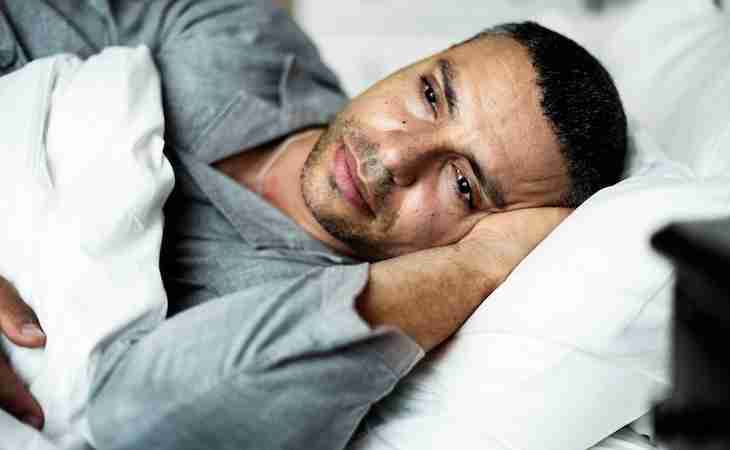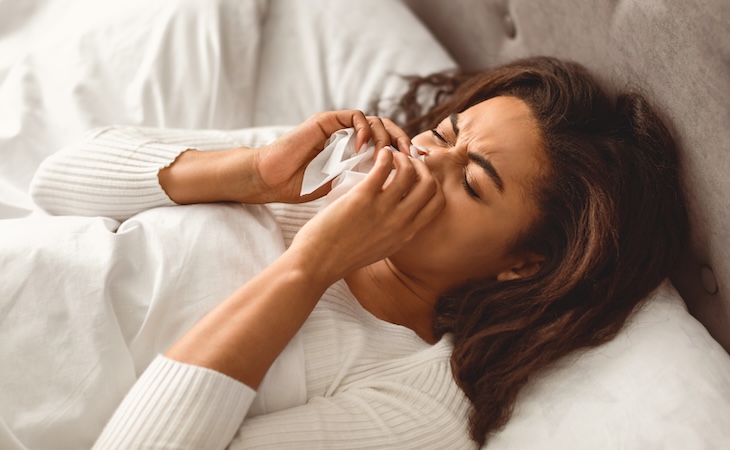A good night’s sleep is fundamental to human health and functioning. Most adults in the United States, however, report struggling with sleep. Restless sleep is the feeling of not getting adequate or high-quality sleep. It’s the subjective experience of sleep difficulty and can be different from person to person.
According to the American Sleep Apnea Association, one in three adults regularly fall short of getting the recommended amount of sleep—about seven to eight hours per night—in order to stay healthy.
This article will explore exactly what restless sleep is, what causes restless sleep, and how to fix restless sleep, especially since restless sleep may be tied to other health problems if not addressed.
What is restless sleep?
Restless sleep is characterized by nighttime disturbance of sleep. It can affect any age group from newborns to older adults. The term “restless sleep” itself isn’t a true medical diagnosis. It’s often used as a description of poor sleep and is present in many sleep disorders such as insomnia, sleep apnea, restless legs syndrome (RLS), narcolepsy, and circadian rhythm disturbances. Often, people who feel they’ve had a restless night may have daytime impairment including next-day sleepiness.
In recent years, a newly identified pediatric sleep disorder known as restless sleep disorder has been recognized by pediatricians. Children affected by this disorder are often described as having excessive nocturnal motor activity involving movement of the arms and legs, repositioning of the body, and at times even falling out of bed. It can sometimes be tied to other pediatric sleep disorders but is now recognized as a stand-alone diagnosis as well.
What are the symptoms of restless sleep?
Restless sleepers may have one or all of the following symptoms associated with restless sleep.
- Difficulty sleeping, which includes:
- Difficulty falling asleep
- Difficulty staying asleep
- Difficulty falling back asleep if awoken at night
- Tossing and turning frequently
- Irritability and mood changes
- Daytime sleepiness or fatigue
- Cognitive difficulty (memory impairment, slow reaction times)
- Heart disease
- Insulin resistance and diabetes
What causes restless sleep?
As discussed, restless sleep in adults is often tied to another underlying disorder or health problem. These underlying causes include but are not limited to stress, sleep apnea, narcolepsy, insomnia, restless legs, pain, and caffeine use.
Stress
Stress and mood disorders can wreak havoc on sleep since a racing mind and altered mood can naturally make it hard to relax enough to fall asleep. In fact, many people with anxiety and depression complain of restless sleep. More and more research is pointing to psychiatric comorbidities as being a high predictor for the development of restless sleep.
Sleep apnea
Sleep apnea is a sleep disorder characterized by repetitive obstructions of the upper airway during sleep. These obstructions impede air movement into the lungs, causing breathing cessations or “apneas.” This air deprivation then triggers the body to briefly arouse in order to kick-start breathing back up. Because of these arousals, people can have nighttime awakenings and unrestful sleep.
Narcolepsy
A rare condition affecting only about one in 2,000 individuals, narcolepsy can cause restless sleep. In individuals with narcolepsy, neurons that produce a chemical called hypocretin are lost. Normally, hypocretin helps stabilize the body’s sleep-wake pattern. When this stabilization is compromised, erratic sleep occurs and can manifest as unrestful, poor sleep in these individuals.
Insomnia
The words insomnia and restless sleep are often used interchangeably. However, insomnia is a true medical diagnosis while restless sleep is a symptom or constellation of symptoms that can be characteristic of insomnia. Insomnia is a debilitating sleep pattern that can cause difficulty with all aspects of sleep, including falling asleep and staying asleep despite the adequate opportunity for sleep. According to the American Academy of Sleep Medicine, it requires the experience of daytime impairment as well.
Restless legs syndrome
RLS is another sleep disorder that can disrupt sleep. People with restless legs experience an overwhelming urge to move their legs, which is worse in the nighttime hours. RLS can be caused by low iron as well as by a dysfunction of the dopamine signaling in the brain. Since RLS is worst at night, it can directly cause restless sleep.
Pain
Pain, both acute and chronic, can cause restless sleep. If not managed, pain signals can interfere with the body’s ability to fall asleep. In this case, fixing restless sleep is a matter of addressing the underlying cause of pain.
Caffeine
Caffeine is a widely consumed stimulant across the world. As a stimulant, however, it can also contribute to restless sleep especially if consumed late in the day. Caffeine blocks the action of a chemical called adenosine in your brain, which builds up the longer you’re awake and causes you to feel increasingly tired as the day goes on. The blocking of adenosine by caffeine, therefore, can translate directly into a restless night of sleep with difficulty both falling and staying asleep.
How to fix restless sleep
Restless sleep can be intertwined with several sleep disorders or other conditions, as described in this article. Ultimately, fixing restless sleep will likely be a matter of addressing the associated or underlying cause. Maintaining good sleep habits can be helpful and includes measures such as:
- Keep your bedroom dark and cool.
- Stick to a relaxing bedtime routine.
- Use your bedroom only for sleep.
- Aim for at least seven to eight hours of sleep per night for adults.
- Put down the electronics at least thirty minutes before bed.
- Exercise regularly.
- Avoid excessive caffeine consumption.
Additionally, if you suspect you may have a sleep disorder, like sleep apnea, narcolepsy, restless legs, or insomnia, you should seek care from a physician.
FAQs
How can I stop restless sleep?
It may require some investigation to figure out the cause of your restless sleep. Often, it’s associated with another condition that is causing sleep disturbance. These can include mood disorders, pain, or sleep disorders like sleep apnea. Maintaining good sleep habits can help with restless sleep as well as uncovering and treating the underlying cause.
What is sleep hygiene—and why is it so important? Check out our guide to sleep hygiene to learn how to improve yours for better shuteye.







